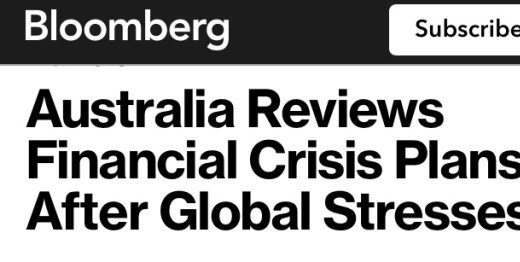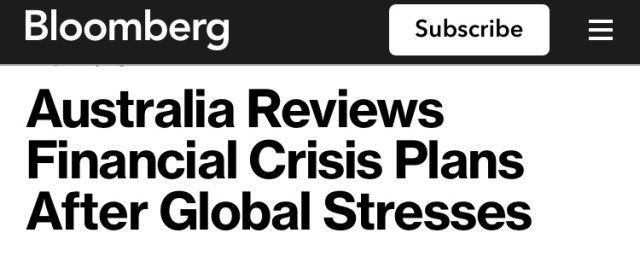Australian Financial Regulators are preparing for Banking Turmoil
TOTT NEWS
Dramatically rising costs of living are provoking fears of a recession, if not another Great Depression. Mid-year Australia's Council of Financial Regulators reviewed the nation's economic crisis management arrangements in the wake of recent overseas collapses.
“The council is assessing Australia’s crisis management settings to ensure they remain robust in light of international developments,” the regulators said in their quarterly statement.
The Council of Financial Regulators has four members:
The Australian Prudential Regulation Authority
The Australian Securities and Investments Commission
The Australian Treasury
The Reserve Bank of Australia.
Recently departed Reserve Bank of Australia Governor Philip Lowe chaired the council.
Although Australian banks remain “well capitalised and resilient” and weren’t directly impacted by banking turmoil in Switzerland and the USA, the pace of the withdrawal of funds from banks in the digital age worried regulators and prompted them to review their preparations.
On domestic lending, the council backed a 3% serviceability buffer that banks need to apply on top of the existing mortgage rate to assess borrowers’ capacity to meet their repayments.
Australia’s cash rate currently stands at 4.1% and mortgage rates are running at around 6%, implying a borrower faces a 9% serviceability threshold to be approved for a loan.
“The council noted that the APRA would continue to assess the appropriateness of macroprudential policy settings as economic and financial conditions evolve.”
After locking the world down for two years, costing the economy hundreds of billions of dollars, the chickens are now coming home to roost, with grim forecasts set for the future.
But hey, at least we ‘stopped the spread’!
INTERNATIONAL WOES
In the US, regulators have shut down and sold three mid-size US banks since the beginning of March – Silicon Valley Bank, Signature Bank and First Republic.
The failures are the biggest to hit the US since the 2008 financial crisis.
In Europe, troubled Swiss giant Credit Suisse was perhaps the biggest story of the year, a major international player in its own right, is now being taken over by rival UBS in a forced rescue deal.
The collapses came after customers worried about the safety of their funds withdrew their money en masse, while U.S. regulators have said smaller independent banks will not be saved like large ones.
In recent months, economists have debated what types of implications these collapses could have for us here in Australia, fearing a trickle-down effect of distrust in banks.
Now, with this new review, it seems there may be some worry amongst regulators.
Many economists across the world are forecasting that a macroeconomic recession will begin in late 2023 and persist throughout 2024, which could spark another Great Depression scenario for the West.
Of course, when you peel back the layers a little bit further, you can see that this is all a designed implosion so the new-world central bank digital currencies (CBDC) will welcomes with open arms.
https://tottnews.com/2023/03/18/discussion-gkp104/
Similar to how the original Great Depression of the 1930s led to the normalisation of fiat-based currency after the introduction of the Federal Reserve system.
The Reserve Bank of Australia (RBA) is already trialling over a dozen CBDC pilot programs.
Once again, as was the case 100 years ago, the world is being transformed through a swirl of viral ‘virus outbreaks’, ‘wars’, and crippling inflation. One could almost say it was meant to be this way all along.
The great cycles of the ruling classes to ensure the masses remain firmly in their grips.
This time with be much different, however, with track-and-trace technology underpinning our modern world at every turn. This time, nobody will be able to spend a cent without ‘the eyes’ watching you.
Of course, this is their vision for the future.
When presented with this opportunity for a ‘new economic horizon’, Australians should say ‘no!’.
‘We don’t want your new system!’.







